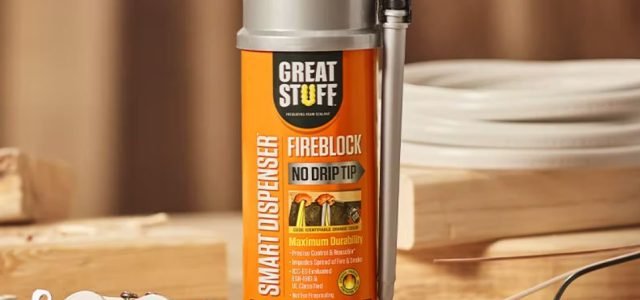Great Stuff is a popular brand of expanding foam insulation commonly used in construction and DIY projects. One question that many people have is whether Great Stuff is flammable once it dries. In this article, we will explore this topic to provide you with a clear understanding of the flammability properties of Great Stuff foam.
The Composition of Great Stuff Foam
Great Stuff foam is primarily composed of polyurethane, a type of plastic material. It undergoes a chemical reaction upon exposure to air, expanding and hardening in the process. Since polyurethane is derived from petroleum, it is important to consider its flammability characteristics.
Understanding the Flammability of Polyurethane
Polyurethane can be flammable, especially in its liquid form or when it is exposed to high temperatures. However, once polyurethane foam is completely cured and dried, it becomes less flammable. The drying process involves the evaporation of solvents, leaving behind a solid foam structure that is more resistant to combustion.
Fire Ratings and Great Stuff Foam
Great Stuff foam has been tested and assigned a fire rating by the American Society for Testing and Materials (ASTM). The fire rating indicates the level of flammability and how the material will behave in the presence of fire.
There are different fire ratings that range from Class A to Class C, with Class A being the least flammable and Class C being the most flammable. Great Stuff foam is typically classified as a Class B material, which means it has moderate flammability.
Precautions for Using Great Stuff Foam
Although Great Stuff foam is considered to have moderate flammability, it is important to take proper precautions when using it:
- Avoid exposing the foam to open flames or high temperatures, as this can increase the risk of ignition.
- Do not use Great Stuff foam in areas that require fire resistance or have specific fire code regulations.
- When applying the foam, make sure to follow the manufacturer’s instructions and use it in a well-ventilated area.
- Keep a fire extinguisher nearby when working with any flammable materials.
Understanding Fire Safety with Great Stuff Foam
While Great Stuff foam is not highly flammable, it is important to understand and follow fire safety guidelines when using any construction or DIY materials:
- Read and follow the safety instructions provided by the manufacturer.
- Store Great Stuff foam away from heat sources or ignition points.
- Avoid smoking or using open flames near the foam or its containers.
- In case of fire, evacuate the area immediately and call emergency services.
Fire-Resistant Alternatives
If you have specific fire resistance requirements for your project, there are fire-resistant foam alternatives available. These foams have been specially designed to provide enhanced fire resistance and comply with specific fire code regulations. Always check the product labeling and specifications to ensure you are choosing the appropriate foam for your needs.
In Conclusion
Great Stuff foam, once dried and cured, is less flammable due to its solid foam structure. However, it is still important to handle it with care and follow fire safety precautions. Understanding the fire rating and limitations of Great Stuff foam will help you determine if it is suitable for your project. Safety should always be a priority when working with any materials, especially those that have the potential to be flammable.
FAQs
Is Great Stuff Flammable After It Dries?
Yes, Great Stuff is flammable after it dries. It is important to follow safety precautions when using it near flames or heat sources.
Can Great Stuff Cause Fires?
Yes, if Great Stuff comes in contact with an open flame or sparks, it can ignite and cause a fire. It’s important to keep it away from any potential ignition sources.
How Long Does It Take For Great Stuff To Dry?
Great Stuff typically takes about 30 minutes to dry. However, drying time may vary depending on factors such as humidity and temperature.
What Are The Safety Precautions When Using Great Stuff?
When using Great Stuff, ensure proper ventilation, wear protective gloves and eyewear, and keep away from flames and heat sources. Follow the instructions on the product label carefully.

